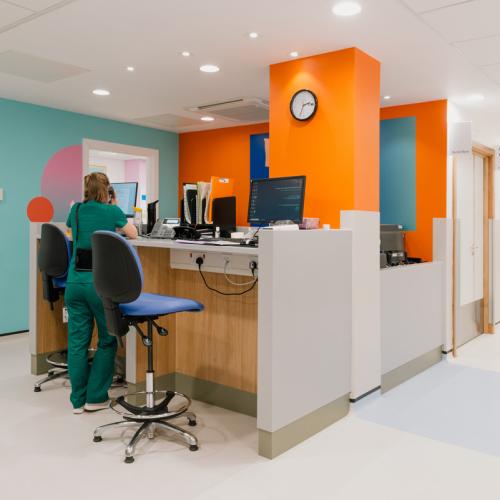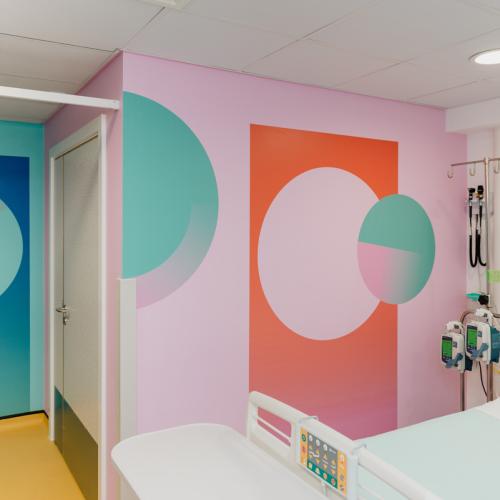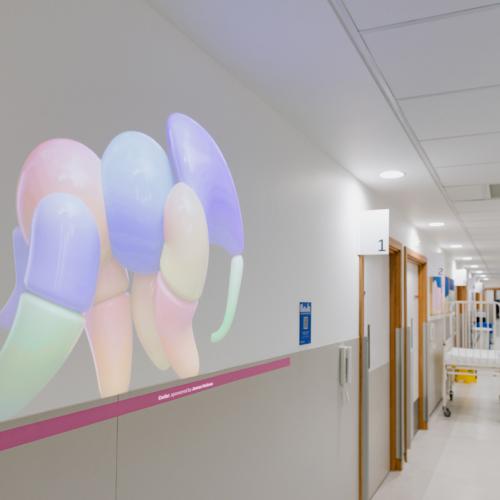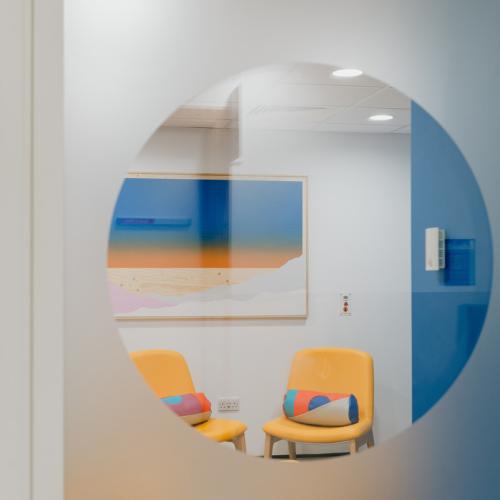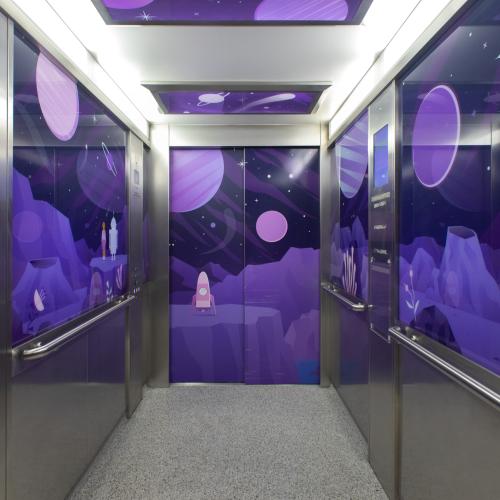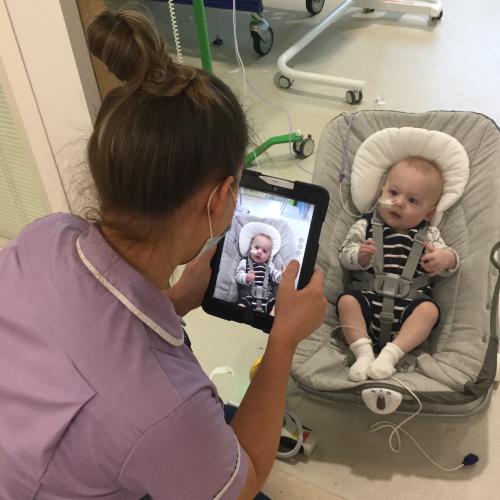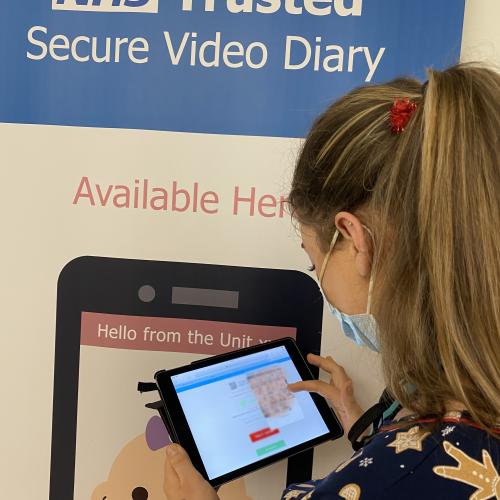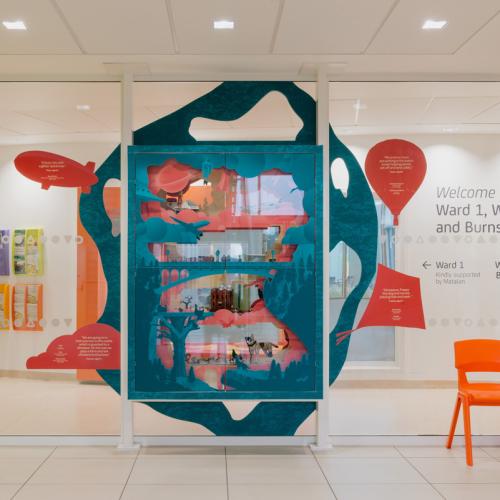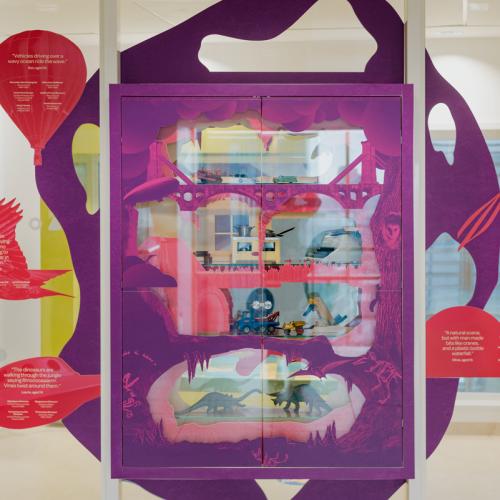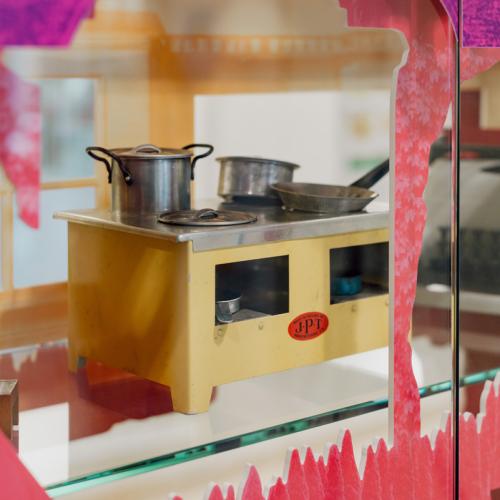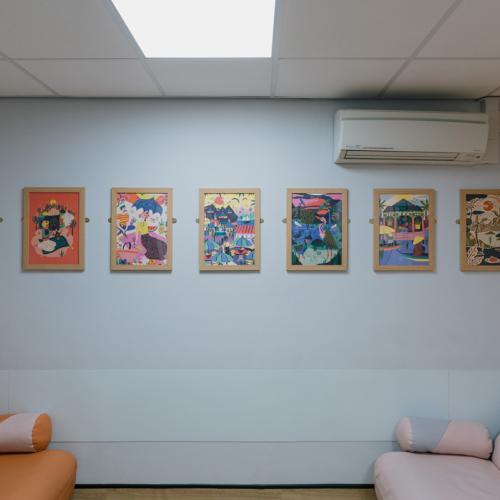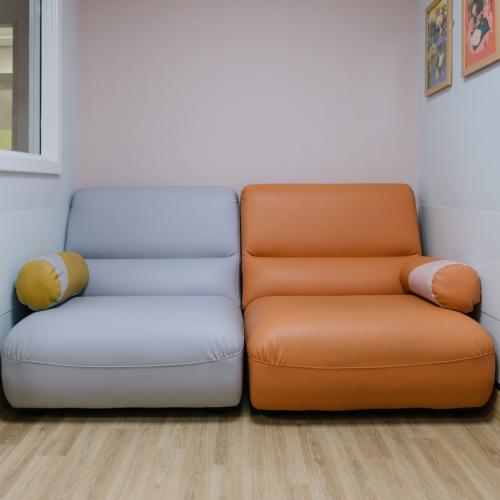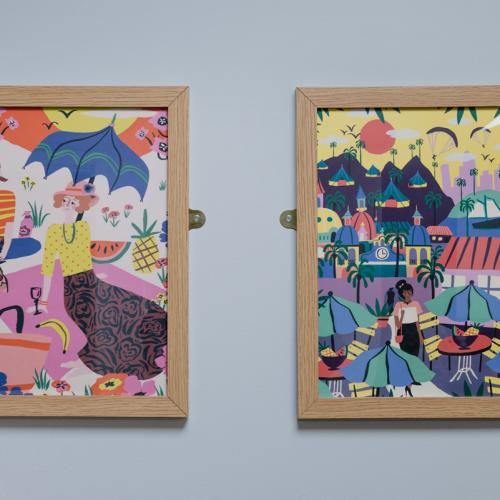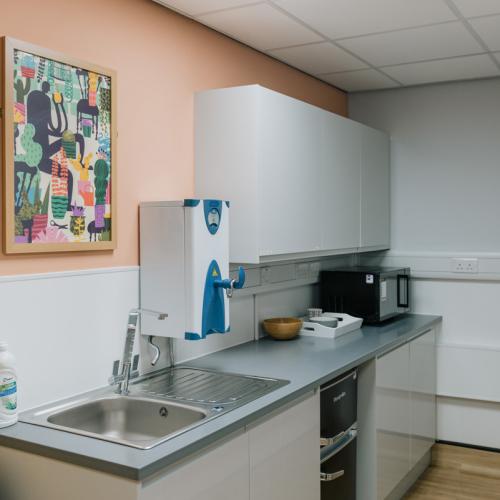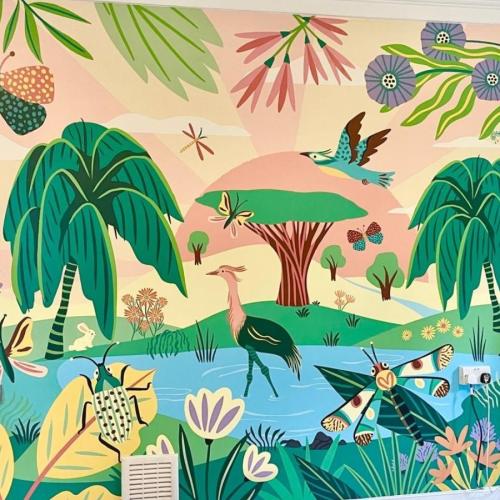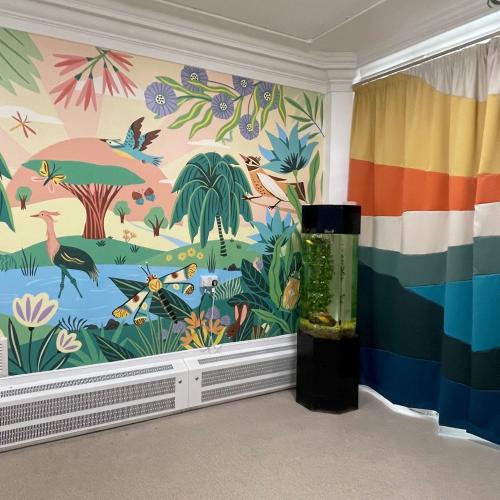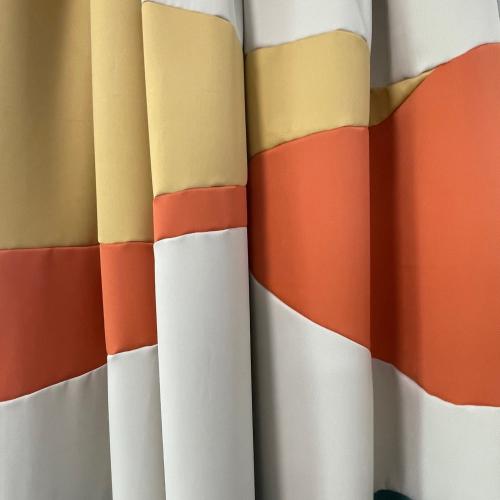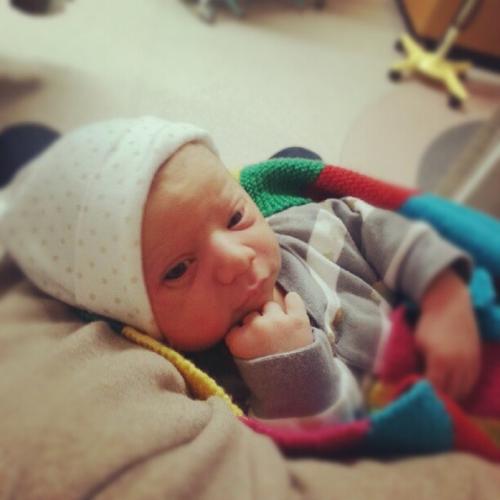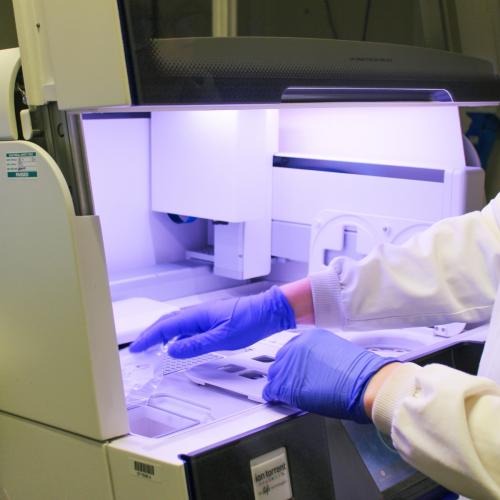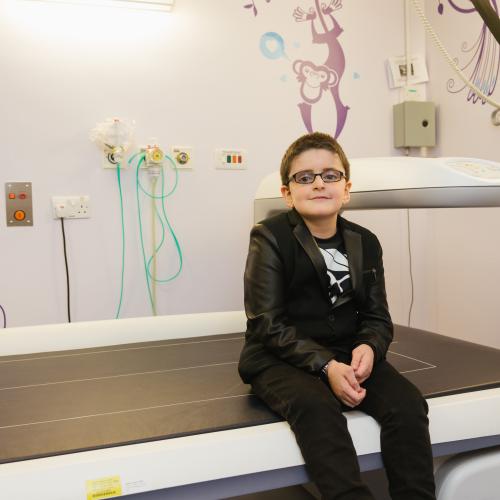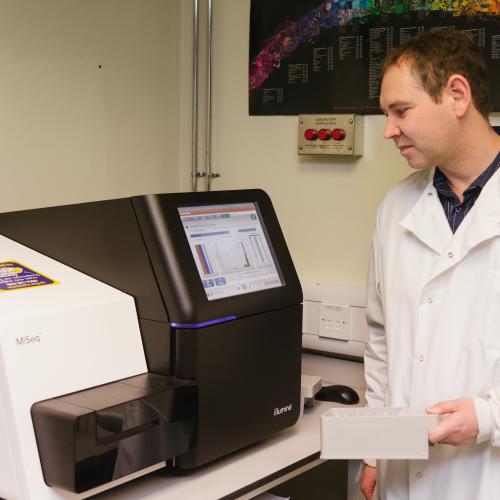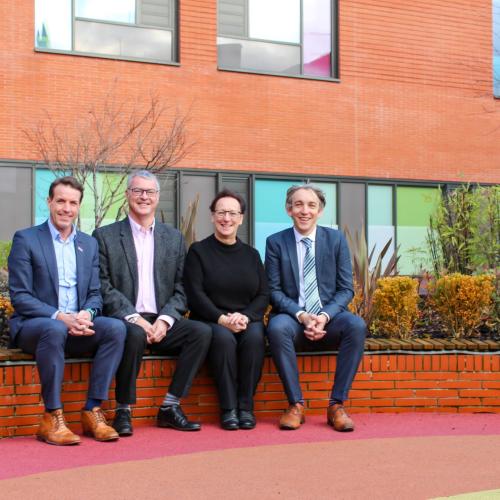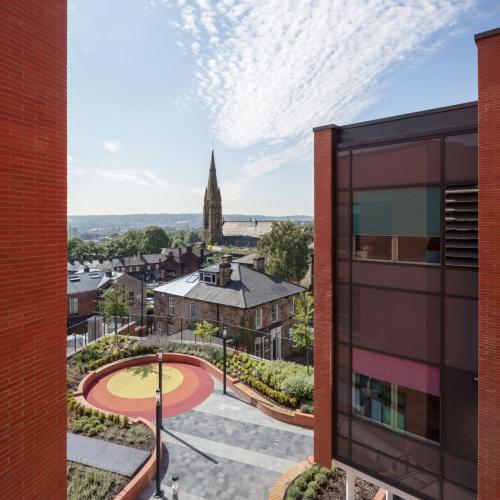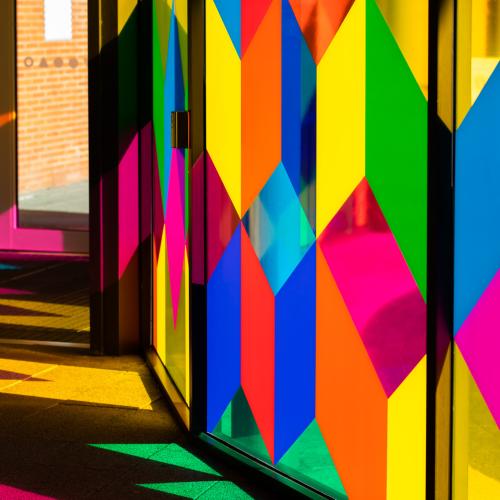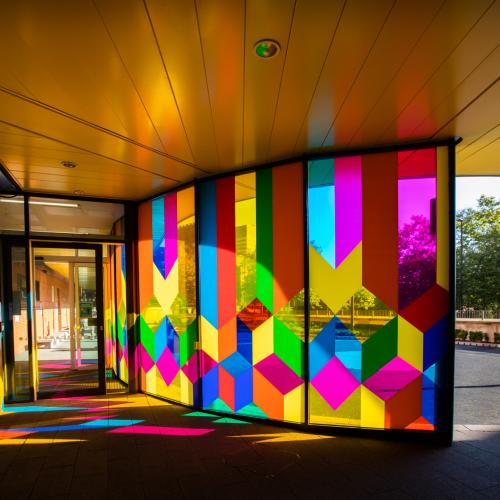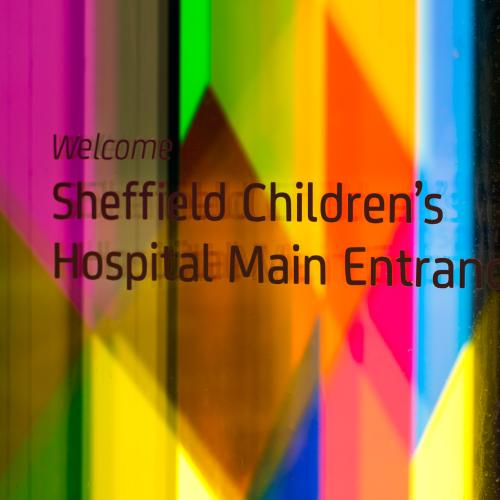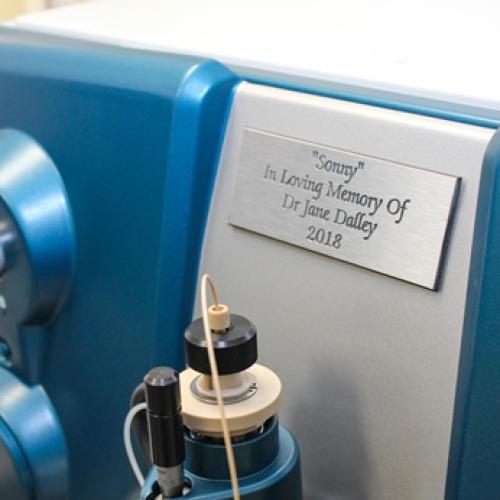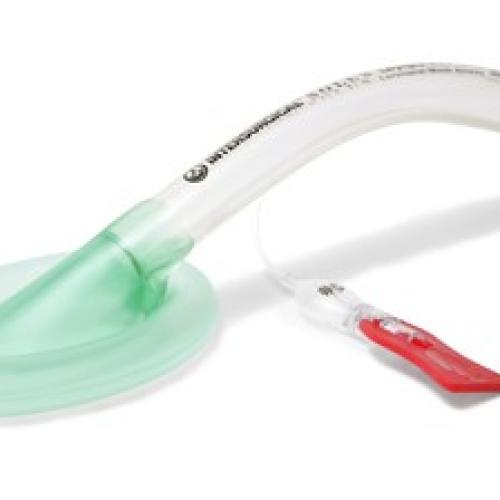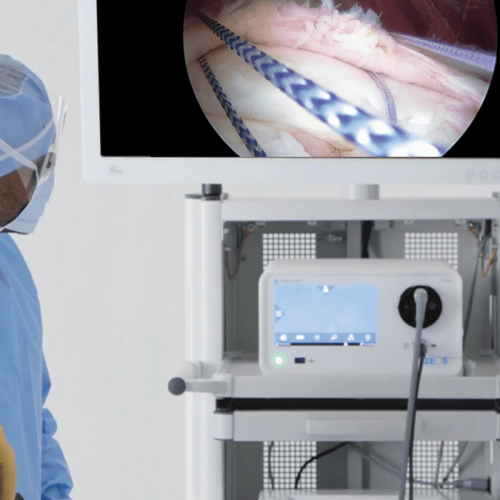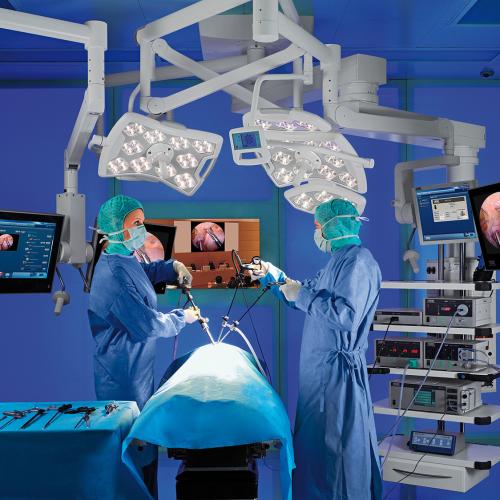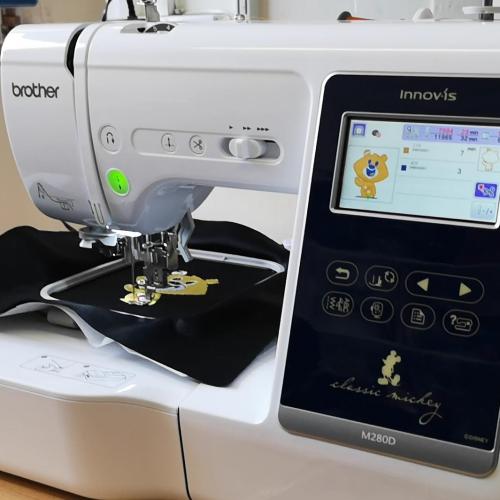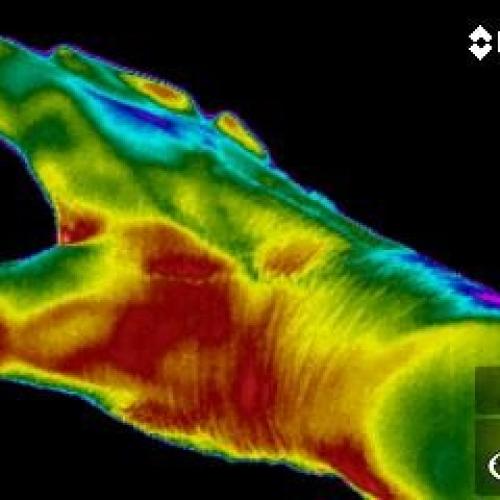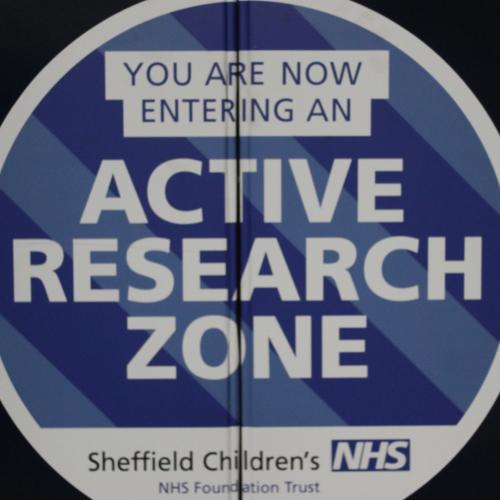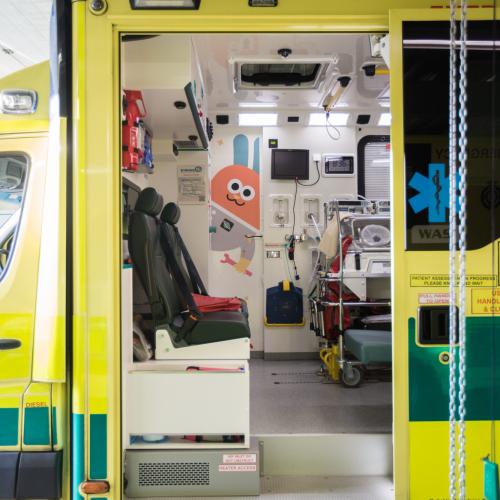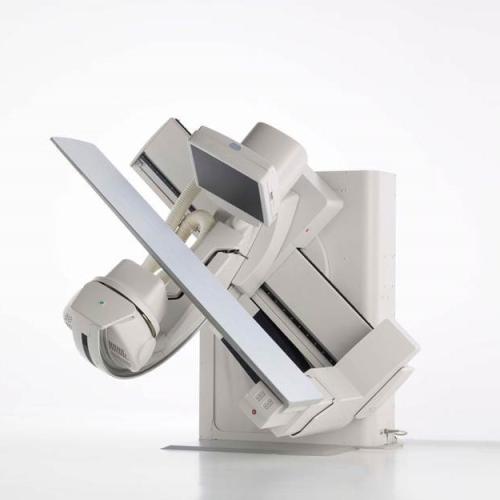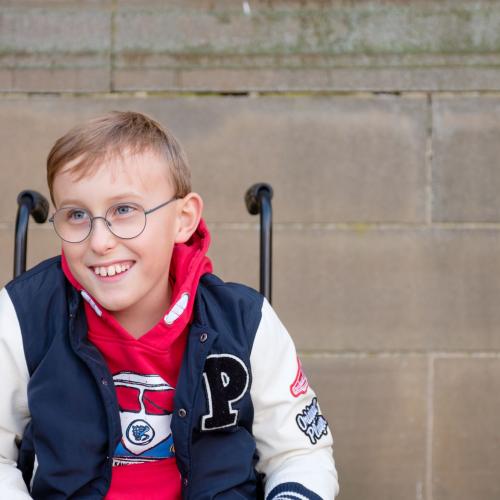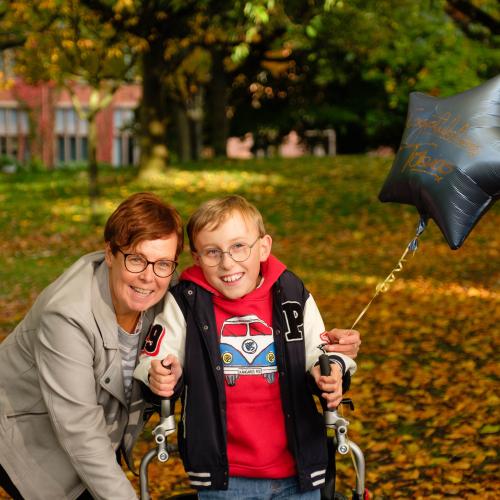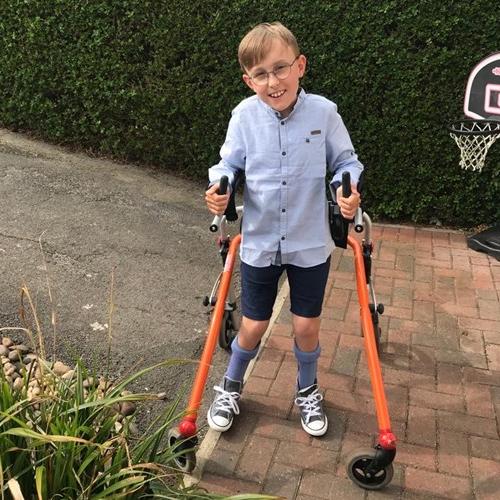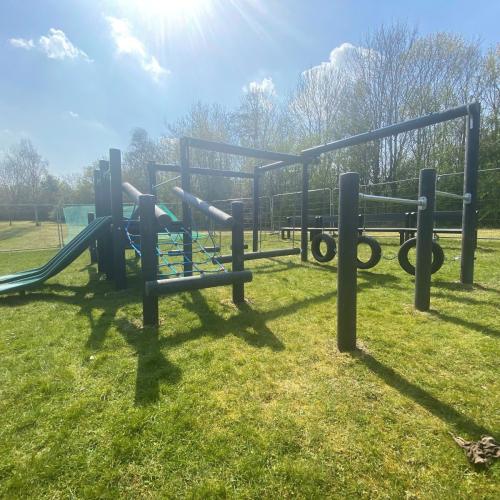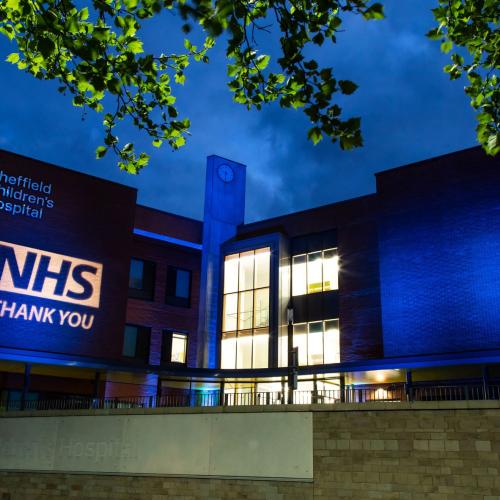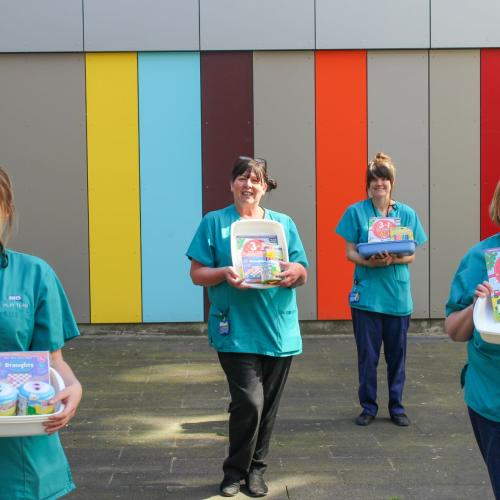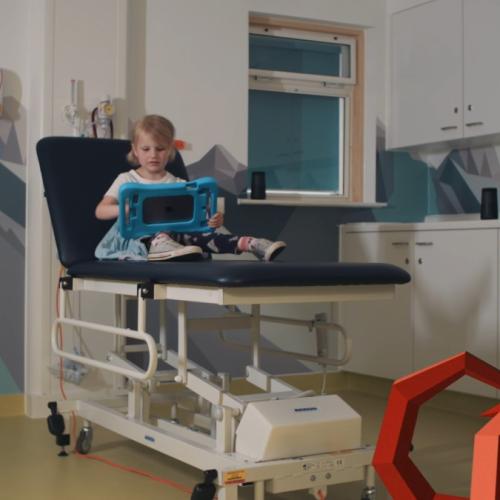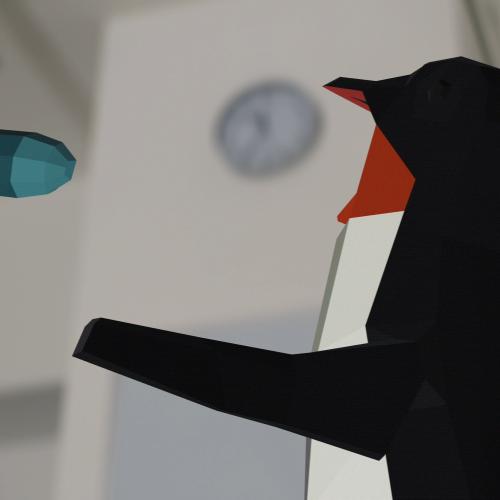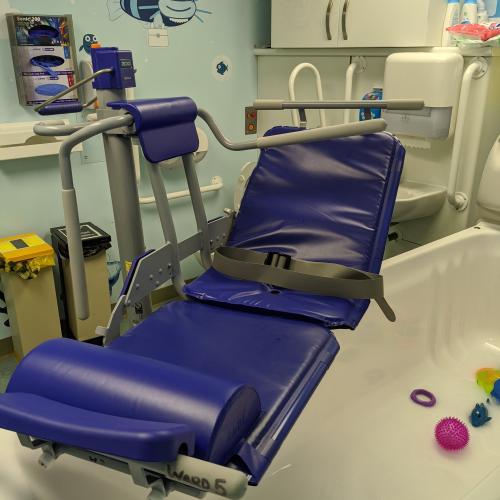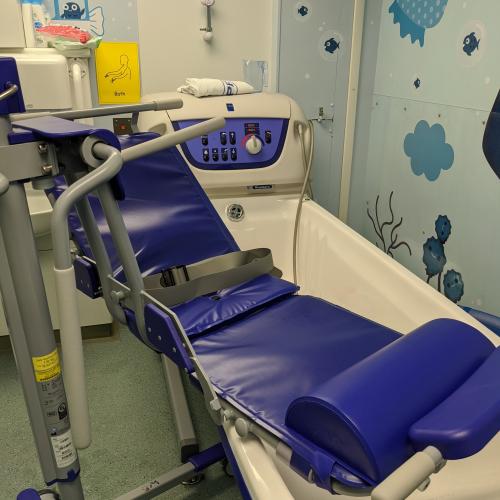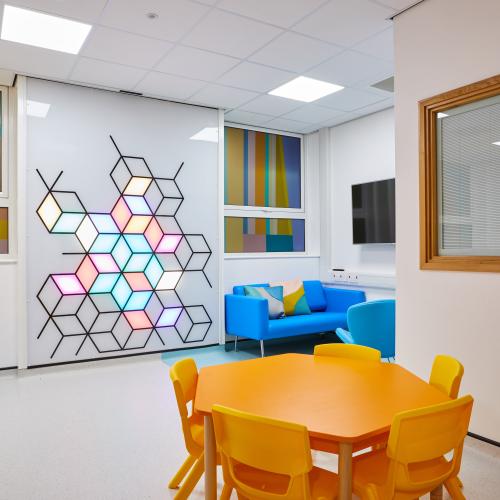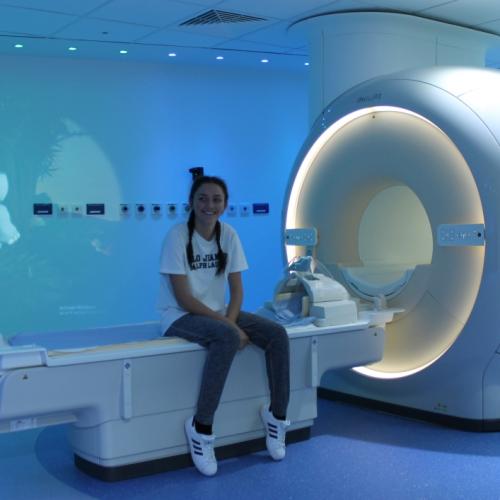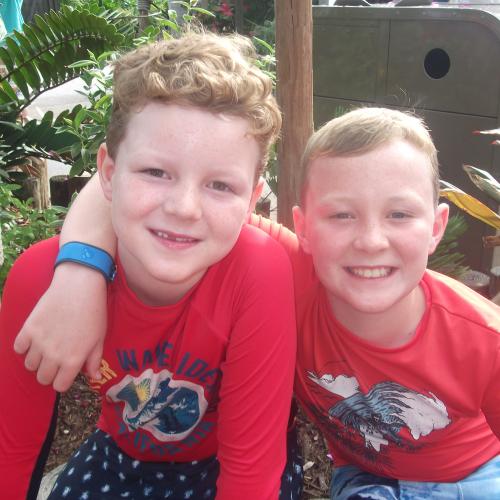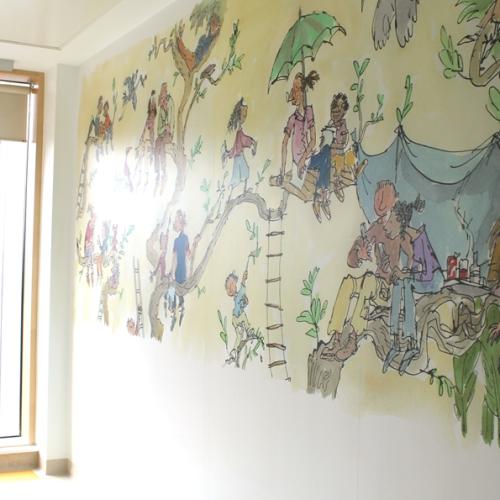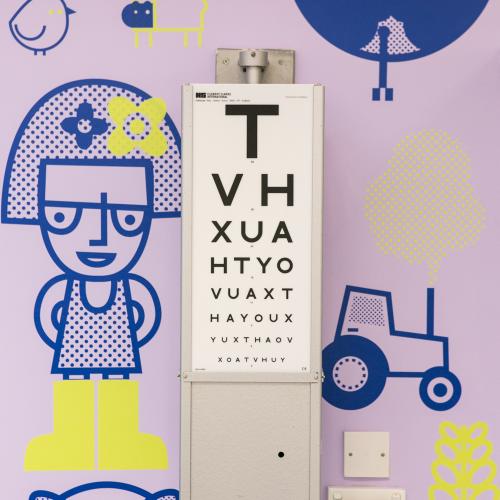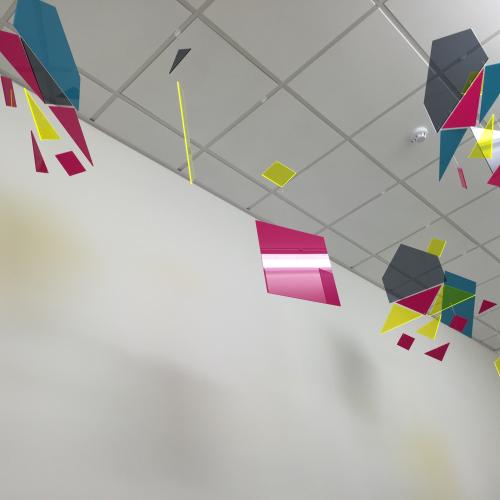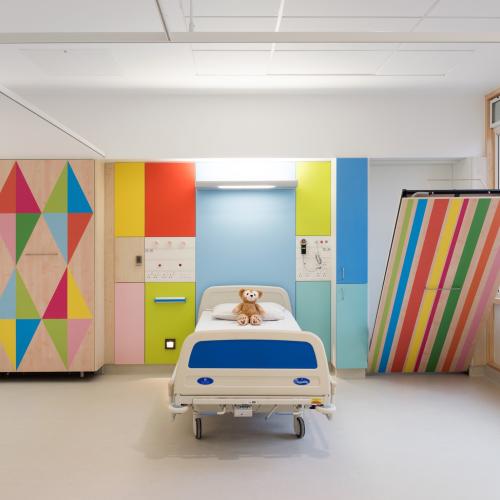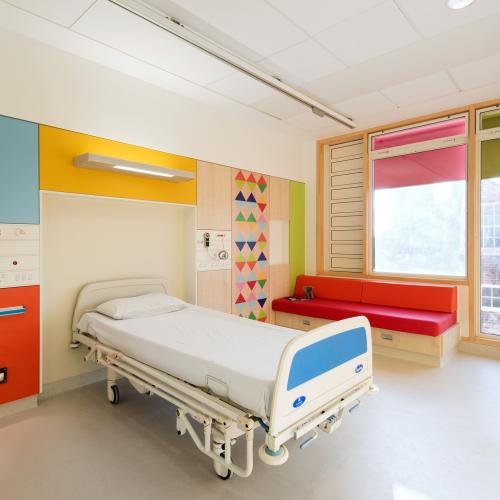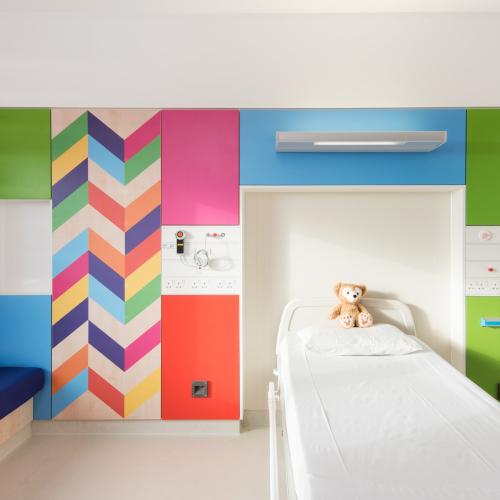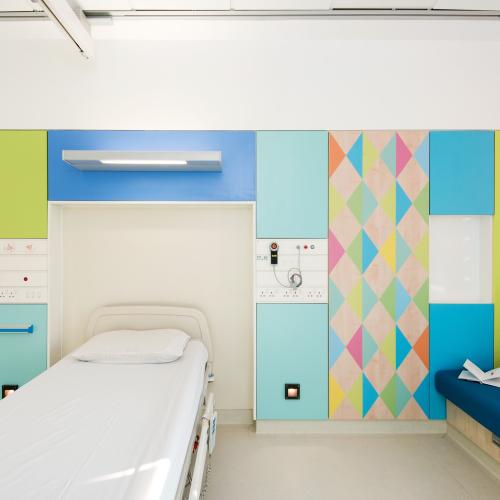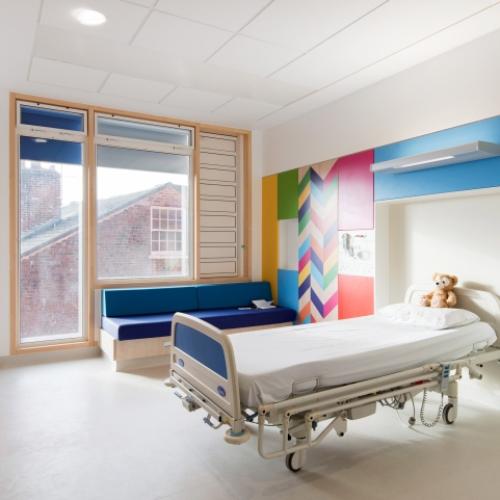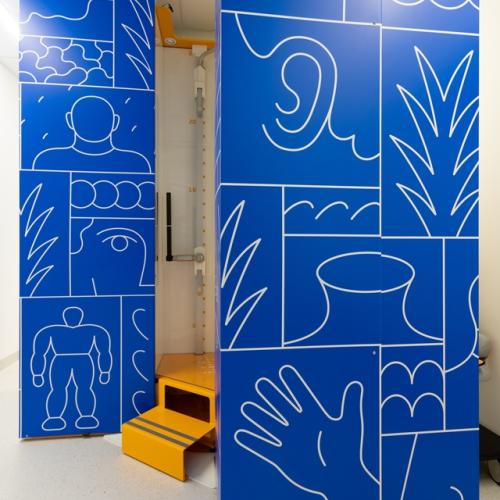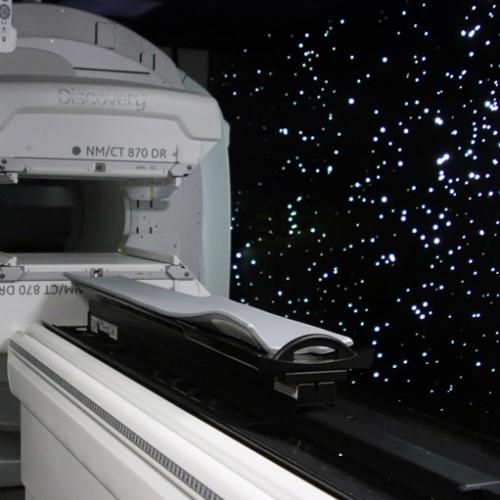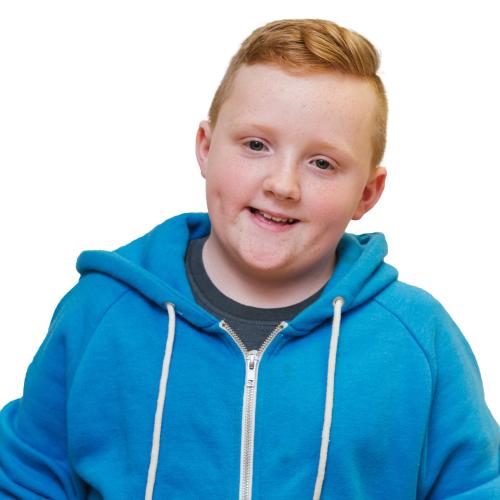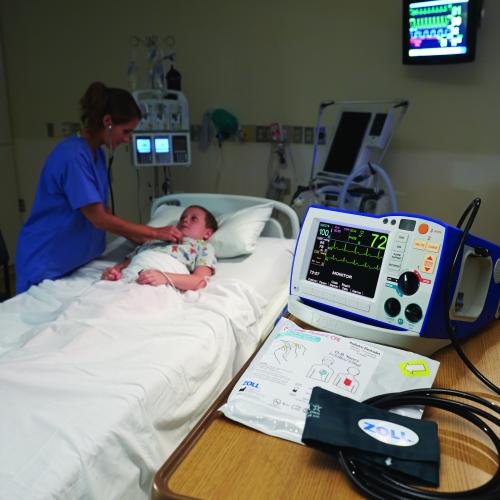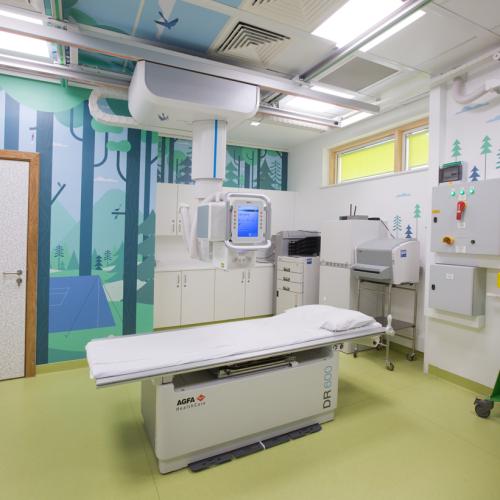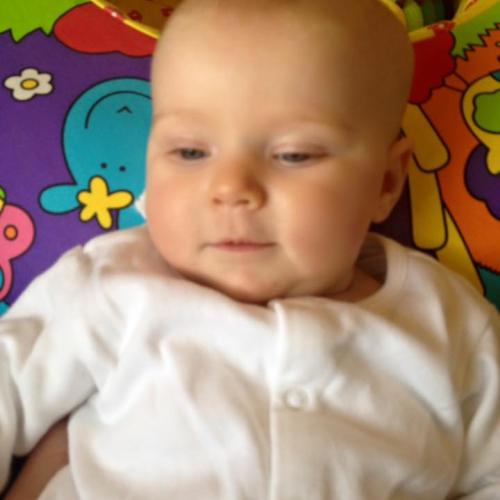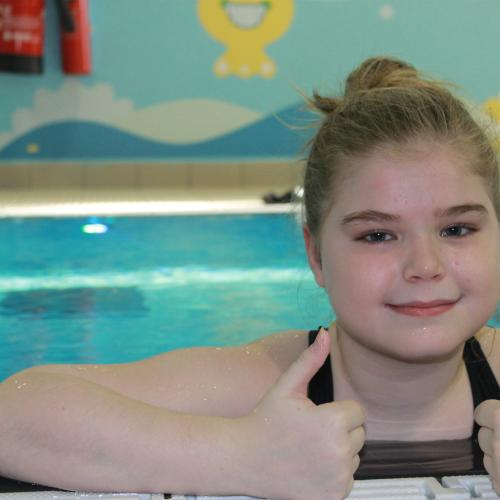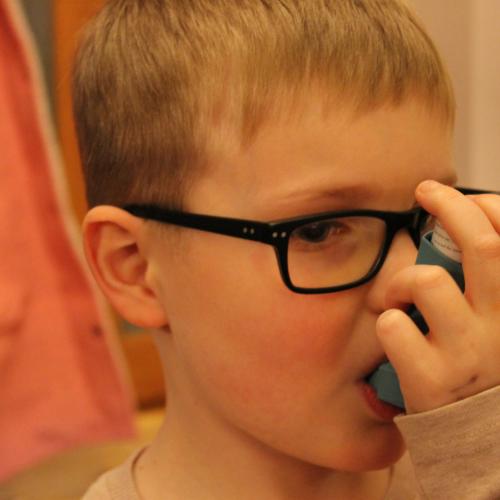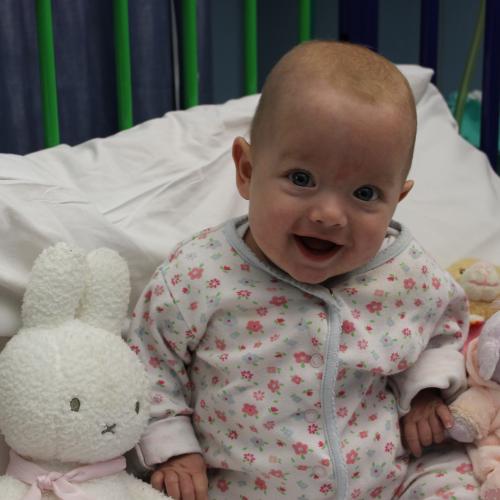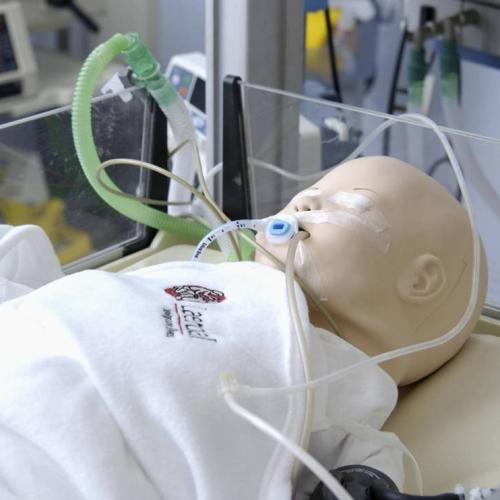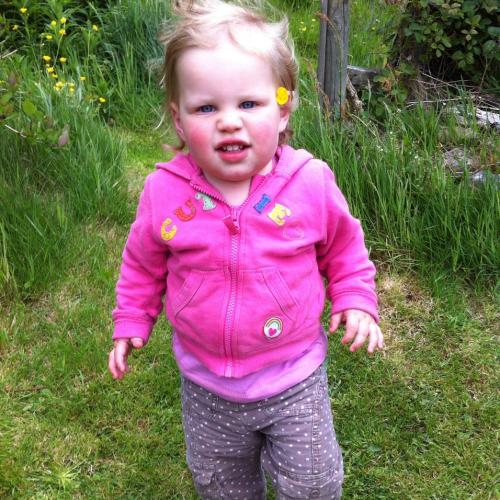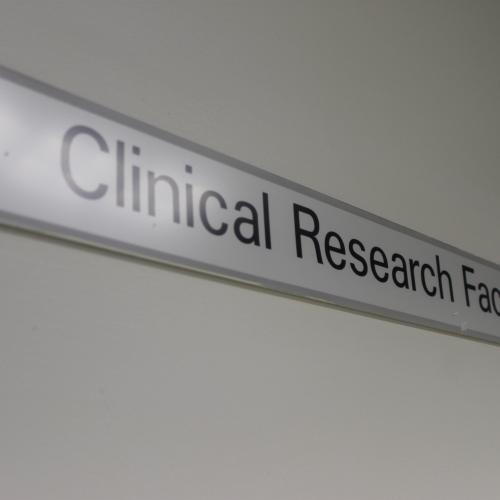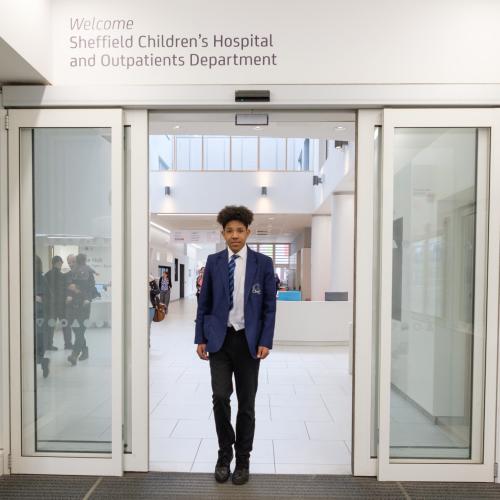Filter by:
Cancer and Leukaemia ward
Cancer and Leukaemia ward
Target: £2,750,000
We did it! Thanks for all your support we have transformed our Oncology and Haematology ward by raising £2.75million.
Donations transformed our Cancer and Leukaemia ward which treats children from babies through to 19-year-olds and is one of twenty principle treatment centres in the UK. The new ward has created space, privacy, and natural light to make isolation a place of sanctuary and calm. Four single patient rooms and six isolation rooms with en-suite facilities, a four-bed bay with assistant bathroom and a two bed bay give patients a place to make their own, with room for all their toys and space for a parent to sleep comfortably alongside them.
Artfelt worked with Field Design Agency in collaboration with local artist, Chris Jarratt transforming the environment on ward 6. Based on consultation with families and staff, Artfelt developed a ‘comforting’ space which acts as home from home. The artwork offers levels of engagement which remain fresh over multiple stays and provide features to get patients up and moving around. This includes interactive magnetic walls in patient bedrooms, sophisticated artwork in the circulation spaces and a chilled-out area for adolescents to socialise.
Immersive Technology Funding Cancer and Leukemia Ward £20,000
Ground-breaking immersive technology equipment has been installed within the playroom of the new ward. This creative technology brings the room to life allowing children to physically interact with the space. From popping virtual bubbles through to experiencing virtual environments of places patients know and love such as visiting home or joining a birthday party. They may see their friends and relatives beamed virtually into the room. For children hospitalized for several months at a time, it provides a safe way to interact with the outside world.
-
Artwork for New Lifts
Artwork for New Lifts
Bright new lifts are being unveiled across Sheffield Children’s thanks to a collaboration between charity-funded arts programme, Artfelt, and the Estates Team to create a sense of adventure for patients moving around the hospital.
The project has been devised to help children and young people, as well as parents and carers, interact with their surroundings, creating adventure and distraction to ensure they feel relaxed at what can be a difficult time.
The extensive lift refurbishment programme, which will see six new lifts installed across the Western Bank site at Sheffield Children’s, will cost over £1m in total.
Thanks to Artfelt, and the Estates Team the new lifts also offer an experience of adventure for patients, acting as distraction for children on their way to appointments by featuring artwork on the walls, ceilings, and doors.
Working with concepts developed by design agency, Cafeteria, and illustrations from artist Tatiana Boyko, Artfelt have made sure the new lifts offer an experience of adventure for patients moving around the building.
The exciting designs feature explorer Amy (based on Yorkshire’s own explorer Amy Johnson) and her robot sidekick, Chip, as they adapt to and explore the different worlds.
V-Create
V-Create
To keep families connected, vCreate has been funded in two departments. The service is available in our neonatal surgery unit and on paediatric post-surgical ward, which cares for children for anything from a few days to weeks after surgery.
The secure video messaging technology allows nursing teams to share photo and video updates of children with their families when they are unable to be on the ward. The nurses can add personalised messages and effects to the captured memories to make them extra special for every family. The project started on the neonatal unit and has expanded so parents of children transferred between departments can still receive photo and video updates of their little ones as they recover. V-Create helps bridge the gap for parents, if they are needed at home with other siblings they can still receive updates of their child in hospital.
Mini museums
Mini museums
Artfelt has worked with Sheffield Museums to bring elements of their collection to Sheffield Children’s, creating the hospital’s very own Mini-Museum.
Working with facilitator Carmen Kalnars, patients on Wards 1, 2 and 3 at the Western Bank site looked at vintage toys from the museum and invented stories on how they might interact. Alongside creative agency, Peter and Paul, these stories were turned into special worlds within glass display cabinets at the entrances to the wards. The beautiful artwork allows visitors to peer into the scenes and see the objects children have selected; turning patients into curators of these unique exhibitions.
Many of our patients and families are not regular visitors to museums and galleries, or are unable to visit due to illness. Therefore, it’s brilliant to bring some of the city’s collection into the hospital setting to offer a different experience during their stay. I’ve loved seeing the stories the children have come up with and it’s so special to have these pieces loaned from the museum. Access to arts and heritage is proven to improve both physical and mental health so we’re excited to keep working with Sheffield Museums on more exhibitions in future.
Wards 1 and 5 Parent Rooms
Wards 1 and 5 Parent Rooms
Staying in hospital can be a stressful and anxious time for families. By offering parents a calm and comforting space to relax away from the ward, we can help them support their child during their time in hospital.
Thanks to a grant donation from True Colours Trust two Parent Rooms have been improved on Ward 1 and 5. Ward 5 has received the most prominent works with a new entryway, comfy sofas, white goods, crockery, and a complete refresh featuring relaxing new artwork. Ward 1 now has an extended recess which has created a separate kitchen area for parents to store and prepare hot food and drinks. The Artfelt team transformed the rooms into warm and welcoming places for parents to have a little time away from the wards to prepare hot drinks, meals and relax.
Dining Room at Ryegate House
Dining Room at Ryegate House
Ryegate House is a 24 hour respite care facility for children with complex neurodisabilities, multiple and profound physical and learning disabilities and life-limiting conditions.
Artfelt transformed their dining room area by commissioning artist Marijke Buurlage to design a large wall mural. The design brief was for a mural that was calming yet fun for the children to interact with, livening up the space without making it too over stimulating. Artist, Elanor Young, was then asked to create curtains that responded to the mural creating a cohesive feeling using the colours and extending the landscape from the mural design, providing a colourful backdrop to the room when they are closed.
Bronchopulmonary Dysplasia
Bronchopulmonary Dysplasia
We have helped to fund vital research into support for the most common type of chronic lung disease affecting infants, Bronchopulmonary dysplasia. This disease is even more common in premature babies, and there is a growing need to improve the way the babies’ progress is monitored.
Previously the use of CT-scans to monitor infants progress has been limited because of the amount of radiation these scans can cause. There has been growth in the use of MRI scans in adults to monitor lung diseases as they use far less radiation. The research team look into how this can be used in babies who have suffered with this chronic lung disease. This research will allow babies to be monitored more safely and support their recovery.
Rib Unfolding CT Scan
Rib Unfolding CT Scan
We funded a research project which investigated the practice of ‘Rib Unfolding’ CT scans in looking to protect vulnerable children.
If children less than 2 years old have unexplained injuries, doctors worry that they may have suffered physical abuse. Often young children cannot tell doctors what has happened to them so the doctor will ask for x-rays to look at all of the child’s bones. Fractures may not be visible initially, only becoming visible when they start to heal. A tool called ‘rib unfolding’ can help radiologists in reading CT images of the rib cage. The tool flattens all ribs on a single image and automatically numbers the ribs, which helps the radiologists to identify rib fractures more confidently and quickly. The research is working to see how effective this can be in protecting vulnerable children and young people.
Bone Fragility Research
Bone Fragility Research
We have funded vital research into bone fragility which will support children and young people with lots of diseases right into their later lives.
Bone fragility is sometimes caused by reduced quality or amount of the bone. These disorders can be devastating and get worse with age. As many diseases causing bone fragility have similar features this research will help people with a wide range of disorders. The research will focus on a disorder called osteogenesis imperfecta and will use stem cell science to test potential drugs that could transform the lives of people living with this. These drugs could then help children and young people living with bone disorders and have lifelong effects.
Juvenile Idiopathic Arthritis
Juvenile Idiopathic Arthritis
Target: £32,352
We funded research in 2021/22 investigating a way to improve the independence of children and young people with Juvenile Arthritis.
Developing self-management skills with children from a young age is crucial to managing chronic illness and this research is working to help give the children and young people with juvenile arthritis the confidence to manage their own condition. The research began by looking into two of three prototypes, with room to increase the study to include the third. These prototypes are a wearable pain management device and a motivational physiotherapy tool.
This study will provide insight into children and young people’s experiences of living with Juvenile Arthritis to help future research.
Podium Garden & Information Screens
Podium Garden & Information Screens
Target: £148,000
Julie and Neil MacDonald raised a whopping £148,000 through the Mistress Cutlers Challenge, when Julie was Mistress Cutler in 2013 to fund a Podium Garden for patients and families at the Western Bank site. The money was raised by more than 70 businesses and community groups from across the region as part of the new wing transformation. The garden is sensitively landscaped as part of the new wing project, with fragrant lavender and space to run around.
Artfelt has organised for the installation of two patient information screens in the Podium Garden and Central Courtyard, allowing patients access to outdoors areas whist they wait for their appointment. Working with the e-Systems Team and Estates, the screens allow the Outpatient Department to display appointment details and call patients through when ready. Access to these spaces increases our overall waiting areas, especially with social distancing measures in place, plus this allows our families access to outside space and fresh air.
Plans are also in place to turn the Central Courtyard into the ‘Joy Garden’ in collaboration with artist Morag Myerscough. Working with patients, Morag has designed a fun outdoor space that centres on a bright pagoda and fragrant planting. As we ease out of Covid, it is hoped this space will entice families and staff to enjoy the outdoors more.
Western Bank Main Entrance
Western Bank Main Entrance
Having previously worked on the hospital’s ensuite bedrooms, Artfelt were delighted to collaborate with leading place maker Morag Myerscough again to create a riot of colour for the main entrance at Sheffield Children’s. Morag was commissioned to enhance the status of the entrance and provide a welcoming, playful experience for patients visiting our Western Bank site. It looks glorious in the sun.
Vitamin D Analyser
Vitamin D Analyser
Raised to far: £200,000Sheffield Children’s Hospital’s world-leading chemical laboratory will now be able to better diagnose Vitamin D deficiency thanks to a new £200,000 state-of-the-art machine funded by The Children’s Hospital Charity.
The new Tandem Mass Spectrometer was launched at the hospital this week in memory of Dr Jane Dalley. Jane, a former Lead Clinical Scientist at Sheffield Children’s Hospital, launched the bid for this state of the art machine in April 2017 and her wish came true this year thanks to her dedication.
Sadly, before the fundraising for the equipment had finished, Jane passed away aged just 43 after a short battle with Acute Myeloid Leukaemia in November last year.
The state-of-the-art machine is the gold standard for the diagnosis of Vitamin D deficiency, which can cause a wide range of serious health problems in children. While its impact on bone health has long been known, the effects on other conditions have only more recently been explored. These include dermatological conditions, allergies, gastroenterological health, cardiac disorders and mental health issues.
Over 5,000 Vitamin D tests each year are currently sent away for analysis by Sheffield Children’s Hospital to other hospitals as the team lacked the equipment necessary to test the samples in-house. With Vitamin D testing increasing by up to 15% every year, the new machine will ensure the hospital can provide a service to all 135,000 children in the city.
Camilla Scott, Head of Clinical Chemistry at Sheffield Children’s Hospital adds, “This new machine will be a legacy to a much loved and dedicated colleague and will allow us to undertake important analysis for the children of Sheffield and South Yorkshire and help diagnose and manage children with metabolic bone disease.”
Thanks to the machine funded by The Children’s Hospital Charity, patients can now expect shorter time while awaiting their results and faster access to the treatment they need.
Early identification of Vitamin D deficiency can prevent conditions like rickets going undiagnosed, preventing the potential for lifelong disability and musculoskeletal problems.
Research into anaesthesia safety
Research into anaesthesia safety
Thanks to your donations, a charity-funded study uncovered new findings to help ensure children have a smooth recovery after an anaesthetic.
In research led by Dr Judith Short, consultant in paediatric anaesthesia at Sheffield Children’s NHS Foundation Trust, a trial to see the safest way to remove a laryngeal mask airway after anaesthesia found that fewer complications occur if the child is lying on their side when it is removed.
Dr Short, said: “To administer anaesthesia both in adults and children, the laryngeal mask is often used. At the end of the anaesthetic, the mask is removed before the patient becomes aware of it. During the removal and immediately after, it is possible for complications to occur, such as coughing, vomiting, obstruction of the air passage, closure of vocal cords, and reduction of the oxygen in the blood.”
Previous research has found that removing the mask while the patient is deeply anaesthetised or just before waking leads to the fewest complications. But studies report that complications can affect up to 35 per cent of patients.
Dr Short’s study, which commenced in 2009, involved a trial on 216 patients. They were allocated into four groups with different instructions regarding the removal of the laryngeal mask. Records were kept of any airway complications in the first 15 minutes, and the complications were graded based on their seriousness.
Dr Short added: “There was a significant difference between the overall rate of complications in the four groups, with the lowest rate of complications occurring in the group whose masks were removed with them deeply anaesthetised and on their sides and the lowest seriousness score occurring in the group whose masks were removed just before full wakefulness on their side. We were therefore able to recommend that there is an advantage to placing children on their side for removal of a laryngeal mask and recovery after anaesthesia”
The findings have been published in the European Journal of Anaesthesiology. The study, completed in was part of The Children’s Hospital Charity’s £250,000 commitment each year researching the prevention and cure of childhood illness and disease.
High Frequency Oscillator Ventilator
High Frequency Oscillator Ventilator
Funded solely by the Bancroft family and the Hathersage community in 2016/17, the new High Frequency Oscillator Ventilator is a specialist piece of equipment used to help children with breathing difficulties or whose lungs are not functioning properly.
Conventional ventilators replicate the patient’s normal breathing patterns whereas the new oscillator functions by giving small volumes of air and oxygen into the lungs at a high frequency, which helps to prevent the lungs from being damaged by high pressures.
Smaller children are automatically given the correct energy during resuscitation and it also provides real time feedback and monitors the rate and depth of chest compressions.
This improves the quality of resuscitation and helps to improve the chances of saving a patient’s life.
Arthroscopy Stack
Arthroscopy Stack
The knee service at Sheffield Children's has grown by more than 400% since 2015.
The Arthroscopy Stack funded by the Children's Champions has already made a significant difference to not only the quality of care delivered, but has also increased the number of patients being treated at Sheffield Children's.
Dr Nicolas Nicolau, Consultant Paediatric Surgeon at Sheffield Children's explains: “The new arthroscopy equipment has a 4K screen, which allows us to see in much greater resolution what’s going on inside the knee. The new stack takes up less space making it easier to use in ouroperating theatres with smaller space. It also has a better range of devices, allowing us to do more.
“The equipment allows us to do more operating, potentially seeing two lists of patients at the same time and doubling our capacity to treat children. More than 200 patients , up until the age of 16, have already benefitted from the equipment and only 60% of our knee cases are from Sheffield; the rest come from a huge geographical area, from the South East of England to the North West.
“Being able to show procedures on a huge screen has also meant that clinicians from across the country and internationally as far afield as South Africa and India have travelled to see procedures here at Sheffield Children’s. For me, the new equipment has meant I am more confident in my surgery, I feel safer and that we’re giving patients the benefit of technology in operations that we’ve not seen before. Thank you to everyone who made it possible.”
Integrated Theatres
Integrated Theatres
Target: £359,100
The Children’s Hospital Charity have funded nine new integrated operating theatres at Sheffield Children’s. The project, will help world-leading surgeons share their knowledge worldwide by enabling operations to be broadcast internationally. Funded entirely by charity donations, the specialist equipment enables the integration of both flexible and rigid surgical telescopes into the operating theatres. It is also complete with a specialist HD camera system, which is four times the resolution of the existing system. The generosity of the community has always helped Sheffield Children’s services to be the very best they can be and these technological advancements, above and beyond NHS provision, will support surgical outcomes for years to come.
Embroidery Machine
Embroidery Machine
Target: £1,800
Thanks for charity funding the therapy team at Ryegate recently purchased a new embroidery machine. It allows any image to be transferred onto a range of pressure garments for burns patients, who often require weekly bandage changes. Patients are given a few designs to choose from including their favourite Disney characters, but they can also make special requests.
Dawn Syron-Jones, Occupational Therapy Technician at Ryegate said: “It’s lovely when you can create a new design for a patient, something that is new and fresh, made specially for them. If they can be proud of their garment, they’re far more likely to keep it on and let themselves heal properly. It also provides an opportunity for children to talk about their bandages, without necessarily talking about their injury, which can be vital in cases of trauma.”
Using thermal imaging for paediatric diagnosis and monitoring
Using thermal imaging for paediatric diagnosis and monitoring
Using thermal imaging, clinicians may be able to help diagnoses children who are ill or injured, without unnecessary delays or radiation.
A study led by Prof Paul Dimitri and funded by The Children’s Hospital Charity in 2015/16 determined that thermal imaging showed promising results for diagnosing conditions in neonatal patients and children with wrist injuries, limps, juvenile idiopathic arthritis or osteogenesis imperfecta.
Further research is now needed to test the viability of the thermal image diagnosis on a wider scale.
Research into education around adolescent testicular health
Research into education around adolescent testicular health
A study to develop an effective educational tool for adolescent testicular health was funded by The Children’s Hospital Charity in 2015/16.
There are currently no routine educational services for children and young men highlighting the urgency of a painful or swollen scrotum, even though 1 in 4000 adolescent males experience torsion of the testes each year.
Surgical detorsion can save a testes if performed quickly, with irreversible damaged being noted in the testes from six hours of twist.
The research will steer the development of empowering educational resources to prevent needless testicular loss.
Embrace
Embrace
The Children's Hospital Charity has a long history of fundraising for critical care services and for Embrace – Yorkshire and the Humber’s dedicated infant transport team.
In 1993, the charity donated the first mobile intensive care ambulance, Bear 1. A second appeal for Bear 2 followed, and the £120,000 needed was raised in just three weeks.
When Embrace was set up in 2009 Bear 2 was their first ambulance and since then, the charity has helped keep the service at the forefront of paediatric care.
In 2014, the charity funded a portable cerebral function monitoring machine for to help newborn babies with suspected seizures or severe oxygen deprivation. This helps prevent cerebral palsy and reduce brain injury, and allows treatment to be started before the child arrives at hospital.
The charity has also funded improvements to incubators and snack packs at Embrace, as well as portable chargers for parents on journeys.
Fluoroscopy
Fluoroscopy
A life-saving machine designed to quickly spot blockages to blood flow was funded by the charity following the success of the Herd of Sheffield and patron Dan Walker’s annual golf day in 2016 as well as donations from Children's Champions.
The fluoroscopy system allows our radiologists to see moving X-rays, providing rapid diagnosis when every second counts. Vascular trauma can lead to serious blood loss and disruption to parts of the body and the time from diagnosis to treatment is critical. Loss of blood supply can cause tissue to die, meaning a child could lose their limb. In some cases it can even be fatal.
A continuous X-ray beam is passed through the body part being examined and the beam is transmitted onto a monitor, enabling surgical intervention with minimal scarring and without the child needing to go to theatre.
It is the gold standard for treating vascular trauma and by funding the best equipment available; it means our patients can be treated here at the Children’s Hospital after previously being transferred by air ambulance to Leeds.
Exercise and Physical Activity Therapist and Data Manager
Exercise and Physical Activity Therapist and Data Manager
The Charity have helped to fund two jobs within Sheffield Children's.
Tobias Weller, 10, from Sheffield, was inspired by Captain Sir Tom Moore to do a series of ongoing challenges during lockdown, raising more than £150,000. Tobias, who has cerebral palsy and autism, split funds between his school and The Children's Hospital Charity.
The two-year Children's Exercise and Physical Activity Therapist post will be based at Ryegate Children's Centre.
The role enables many other children, like Tobias, to achieve an exercise or physical activity goal. In addition, they promote the benefits of physical activity for all children with disabilities, offer group activity sessions, make links with local clubs and activities and organise physical activity and sports events with the Physiotherapy & Occupational Therapy team.
Ahead of the role's appointment physiotherapist, Fran Lee, said:
“The role will provide a really welcome addition to the team. It will give the opportunity for young people under our care to pursue new goals, explore and push what they can do and achieve. I’m excited to see how it will help the young people under our care.”
The Charity have also funded the post of Data Manager in the Oncology and Haematology team. Sheffield Children’s research portfolio in Oncology and Haematology forms its largest portfolio of interventional studies. Many of these studies offer treatments that are only available in selected sites throughout the UK and it is important that we continue to increase the research treatment options available in Sheffield.
The charity provided additional funding for a data manager so the team can increase the range of studies further. The Charity contributed 50% of the funding for 12 months.
Becton Playground
Becton Playground
Thanks to a generous donation from John Lewis, The Children’s Hospital Charity officially opened a new playground at the Becton Centre in 2021. The playground was created using recycled beauty products that have been donated by John Lewis customers through the company’s BeautyCycle initiative and is the first of its kind to be created this way. It was installed in April and is already being enjoyed by the children and young people at the Centre.
Tchad Western, Corporate Partnerships Manager at The Children’s Hospital Charity added: “We are incredibly grateful that John Lewis chose Sheffield Children’s to be the setting for this, the first playground of its kind, which has been lovingly created by the recycled donations of their customers. We are sure it will be greatly enjoyed by young patients for years to come and on behalf of all of them, we’d like to say a big thank you.”
COVID-19 Appeal
COVID-19 Appeal
At the beginning of the pandemic we recognised the need to support Sheffield Children’s in whatever ways we could through the specific challenges of Covid-19. This is why we launched our COVID-19 Appeal. Here at Charity HQ we wanted to ensure that Sheffield Children's had everything it needed, when it needed it and we received incredible support to make this happen.
Funds raised will continue to be used, to support Sheffield Children's during the Covid-19 crisis and beyond.
The money you raised has been allocated in many places, here are some of the incredible things you have funded are:
- Books for the Diabetes Department were funded so patients can take them home with them to monitor and track their condition. We have also funded a laptop to help patients monitoring their treatment at home.
- Artfelt Anywhere was developed by our Artfelt team. They were quick off the mark to use technology to fill the gap of not being able to deliver face to face workshops. Funding short films by artists and musicians, the project named ‘Artfelt Anywhere’ brought the joy of creativity into the hospital safely and was made available to both patients and staff at Sheffield Children’s. Art, craft and music activities were also funded for patients, these were delivered in self-contained packages for staff to hand out to patients and families. Creative activities, meditative exercises and culture guides to online content were sourced by Artfelt to help encourage staff mental wellbeing during this difficult time.
- Crafts and play equipment was funded for the Play Team at Sheffield Children’s during the pandemic. To reduce the risk of any potential infection the charity funded a treasure trove of craft activities which were given to and used by one patient only. The charity also sourced small trays and repurposed them so each child had their own collection to keep by their bedside.
- Health and wellbeing for our NHS colleagues was focused on by Sheffield Children’s during the COVID-19 crisis. Downtime spaces have been created across three of our sites that are COVID-19 talk free areas with mindfulness colouring books, pens and crayons, tea and coffee so staff can recharge and refresh whilst being supported by the charity, the Trust and the colleagues. Mindfulness donations were also provided in general staff areas along with goodies and toiletries donated by local businesses.
- Free standing Theo signs were provided to encourage hospital visitors to wash their hands frequently along with an initial order of Theo themed social distance stickers within all areas of the Trust.
- Food vouchers were provided for families who experienced hardship as a result of the Coronavirus pandemic.
- Hand sanitiser was sourced by the charity team during the Covid-19 appeal for use across the Trust… we needed a lot of hand sanitiser!
Augmented Reality app for Burns patients
Augmented Reality app for Burns patients
Artfelt collaborated with Megaverse to deliver an augmented reality game to help patients through their treatment with burns-related injuries.
This innovative application changes the patient experience of treatment, transforming the treatment room into a virtual environment to help children and young people recovering from burn injuries.
The treatment rooms are transformed into an exciting array of artic and woodland worlds that come to life through an iPad. It aims to reduce stress and anxiety around treatments such as wound dressings. The reduction of stress hormones has been shown to improve wound healing, which in turn potentially reduces the development of scarring.
Bathing Trolley
Bathing Trolley
This bathing trolley is an example of the type of equipment we fund.
Costing £5,000, this height-adjustable bath lift trolley can be used for lifting, transferring and bathing patients on our dedicated neurosciences ward who need to remain in a laid-down position.
Safeguarding Support Unit
Safeguarding Support Unit
Thanks to your donations, a new state-of-the-art facility has opened in Sheffield Children’s Hospital, complete with innovative and interactive artwork.
The hospital’s newly developed Safeguarding Support Unit opened to patients in December after 18 months of design and building work. The new space has been funded entirely by The Children’s Hospital Charity.
The service which has been at Sheffield Children’s since 2013, is now in its brand-new space complete with bigger rooms, specialist artwork and unique space for play.
The specialist facility has been sensitively developed as it supports children and young people where there have been safeguarding concerns. This includes patients with potential neglect or physical, sexual or emotional abuse, where specialist children’s doctors are required.
The design of the space was commissioned by Artfelt, The Children’s Hospital Charity's arts programme. The design was carefully considered in order to provide the best possible facility for assessment and to support patients and their families.
Artfelt worked with staff in the unit and psychologists to create a unique space which is designed to feel welcoming, neutral and safe. As well as play equipment for all ages, it also has innovative digital art pieces for children during their visit.
3T MRI Scanner
3T MRI Scanner
The Intraoperative 3 Tesla MRI is an advanced technology imaging device funded for £2.3 million thanks to your support in 2015/16.
It can be used to produce images of the entire body and its rapid imaging during brain surgery assists the surgeon by providing them with more detailed information.
The 3T is part of a theaters redevelopment that makes the intraoperative suite one of the most advanced operating environments in the country, if not the world.
Hesham Zaki, Paediatric Neurosurgeon at Sheffield Children's Hospital, said: “This is a massive step forward. Our new intraoperative 3T MRI theatre is full of innovations including the most up to date neuronavigation equipment and will allow us to lead on the best outcomes for children’s brain tumours both in the UK and worldwide. Completely removing tumours which were previously inoperable is now a more realistic option.”
Narcolepsy Day
Narcolepsy Day
A condition that causes young sufferers to fall asleep spontaneously, often dozens of times throughout the day, was explored at a dedicated event funded by The Children’s Hospital Charity.
Narcolepsy is a rare neurological disorder that affects children from around age six, and lasts into adulthood. Children known to have this condition in the region were invited to attend the first Narcolepsy Day in September 2015.
Professor Heather Elphick, consultant in paediatric sleep medicine at Sheffield Children’s Hospital said: “Some children may fall asleep just two or three times in the day, but have sleeps lasting hours on end that they are very difficult to rouse from”
“Others fall asleep dozens of times a day for just a few seconds at a time. They have to be careful when crossing roads, as they may fall asleep while walking, they need to be careful at heights, when around stairs and they may never be able to drive.”
The sleep clinic exists to control the symptoms of narcolepsy, so the children can go on to live their lives and be independent.”
The first Narcolepsy day brought together 40 guests from 12 families across the region to help learn about the condition and introduce support networks. The children, aged 8 – 16, had an opportunity to meet each other, hear specialist advice on their condition and learn about transitioning into adult care.
Newborn screening
Newborn screening
Each year, we fund up to £250,000 of research into the prevention and cure of childhood illnesses and disease. One of these projects was a pioneering screening programme which detects rare life-threatening diseases in babies.
Thanks to a successful pilot study led by Sheffield Children's Hospital and completed in 2013, all newborn babies in England will be screened for four additional rare but serious conditions. Early detection and treatment for these conditions is potentially life-saving and gives children the best chance of a happy and healthy life.
Professor Jim Bonham, national lead for the project and director for newborn screening at Sheffield Children's NHS Foundation Trust, said: "As a result of this study, we have been able to make an enormous difference to children and their families, in some cases giving them the gift of life."
Sir Quentin Blake
Sir Quentin Blake
Our in-house arts programme, Artfelt, has worked with one of Britain’s best-loved illustrators, Sir Quentin Blake to bring some of his legendary artwork into Sheffield Children’s Hospital.
Blake has written or illustrated more than 300 books, but is best known for his collaborations with Roald Dahl, which sparked the imaginations of generations of children with depictions of the BFG, Matilda and the Twits.
The commission for Sheffield Children’s Hospital includes four large-scale wall vinyl illustrations and 11 framed prints. They can be found throughout the new wing of the hospital in waiting and parents’ rooms and on the ward walls. The work forms part of Artfelt’s mission to transform the hospital’s walls and spaces to help children recover in an environment tailored to them.
Eye Department
Eye Department
Artfelt worked with designer Nick Deakin to create visually stimulating artwork across the Eye Department and provided new furniture, flooring and paint scheme. Nick used bold colours and a simplistic style to create a world of characters running through the department. The project is designed to both engage and stimulate young patients, whilst its placement assists in clinical assessment.
Theatres
Theatres
Works by designers Thomas.Matthews line the theatres corridors to provide distraction for children during the anxious moments before they are anaesthetised. The focus of the work was to create something that would not only complement the state-of-the-art new theatres suites, but would bring cohesion to the old and new parts of the department.
Patients range from aged 0 to16 years, therefore the scheme acts on multiple levels, providing tools for improvisation and dialogue, but without being patronising to older patients. The art culminates with a focal light boxes in the ceiling of each new anaesthetic room and a colourful mobile on route to the new 3T MRI scanner.
Bedrooms
Bedrooms
Artfelt worked with acclaimed designer Morag Myerscough, devising four colourways - from bright to calm - across all 46 en suite bedrooms and a different scheme for the multi occupancy bays in the hospital's newest wing.
All of the bedrooms have a dedicated space for a parent to sleep in a bed as oppose to a camp bed or fold down chair, as well as en suite facilities giving our patients and their family privacy. Enhancements also included specialist glazing which means when a patient is having a tough day they can have some space to be on their own. The design involved some technical challenges - using standard hospital materials in a new way - but we believe the rooms make a real difference to the experience of being in hospital.
“Although the rooms are for children I didn’t want them to be childish because children of all different age groups will be staying in them,” said Morag. “I also wanted to create somewhere parents would be happy to spend time too. It was just about making a bedroom that you felt good to be in.”
The project is part of numerous fresh commissions we're providing for the hospital's biggest ever re-development.
Photos: Jill Tate
Patient entertainment systems in the new wing
Patient entertainment systems in the new wing
On surveying parents and patients, 73% wanted a Bedhead TV with the option to use a mobile device with WiFi.
The cost of each system is around £3,000 and the charity provided funding for 72 units in the new wing of the hospital.
The project will now be extended to fund systems in the remaining wards, meaning each child can choose their own entertainment during their stay in our hospital.
EOS X-ray system
EOS X-ray system
In 2017/18, we funded the EOS scanner which is an ultra-low dose 2D and 3D digital X-ray system.
Based on a Nobel Prize-winning invention, the system allows sitting and weight-bearing images of the entire body, including importantly the lower limbs and the spine.
It imparts an extremely low radiation dose, making it suitable for multiple scans even in very small children.
It also provides 2D and 3D images and allows rapid in-built calculation of many length and angular abnormalities.
Although it is based in the children’s hospital, both children and adults can access the specialists’ piece of equipment, significantly broadening the scope of musculoskeletal research in Sheffield.
This specialist piece of kit was made possible thanks to:
• Morrison’s Foundation
• The University of Sheffield
• David & Jean Fyfe’s Daffodil Ball
Mr Ashley Cole a Consultant Spinal Surgeon at Sheffield Children's said : “I have always been proud of the spinal service at Sheffield Children’s but EOS has been the largest single improvement we have ever had- high quality x-rays, low radiation dose and rapid access being located in the outpatient clinic. During the pandemic, EOS has allowed our much-needed regional service to function throughout this difficult time, giving parents the reassurance that their child continues to be looked after.”
SPECT CT Scanner
SPECT CT Scanner
Launched in January 2019, in the SPECT CT scanner's first year of use 549 scans have been performed, including 462 nuclear medicine scans and 87 CT scans. 16 were combined nuclear medicine and CT scans, which were not previously available.
Clinicians have been able to locate disease within the body more accurately and are able to scan groups of patients that they weren't able to previously, including bone scans for patients after hip surgery.
Patients who require separate scans under sedation are able to have both in one visit rather than returning on several days. The CT scanner also acts as a back-up when the existing scanner requires maintenance and repair, ensuring children can still be treated at our hospital.
Funding the SPECT CT Scanner was only made possible with thanks to:
- Graham Royle from GRI Group Ltd
- Matt Davison of Portland Investment Group
- Children’s Champions
- Legacy donation from the late David Stanley Brackenbrough
- Dan Walkers Golf Day 2017
- Jessica Ennis-Hill
- Westfield Health
- Matt Fitzpatrick
- Supporters of the 2017 Glow Run and National Elf Service
Analysing telescopic rods
Analysing telescopic rods
Telescopic rods are inserted into the bones of patients suffering from Osteogenesis Imperfecta, or Brittle Bone Disease, to treat fractures and deformity. These rods grow as the bones of the child grow, avoiding the need for frequent re-operations. However, the devices currently have a high failure rate and re-operations are needed in up to 50% of cases.
We funded a research project in 2016/17 which analysed the failed rods once they have been removed. The study will support the design of a new and improved Sheffield Rod, with a far lower failure rate.
Defibrillators
Defibrillators
All eight of the hospital’s defibrillators were replaced in 2017 to provide staff with the latest equipment across all areas of the hospital.
Defibrillation is the delivery of lifesaving electrical energy to the heart during an abnormal rhythm or very rapid erratic beating of the heart.
The new defibrillators will provide the emergency clinicians with real-time feedback on their chest compressions which is proven to increase the quality of CPR and improve the chances of saving the patient’s life.
Play Tower
Play Tower
In Christmas 2016, we all went a bit elfy to fund a giant Play Tower in the new outpatients department of the hospital. This will be a child-friendly space where patients can go for distraction and fun, away from their hospital wards.
When children come in to hospital for a planned appointment or for a procedure they can often be quite anxious. The Play Tower will give them something exciting and adventurous to spot and be a place where they can play and have fun.
Every donation to the Christmas fund, up to a total value of £100,000, was matched by Graham Royle of GRI Group, effectively doubling each contribution.
Graham Royle, CEO of GRI Group said, “The Children's Hospital Charity is renowned for funding highly specialised technology for improving patients' treatment but less well known for its hugely important investments in patients' wellbeing. It is believed that relieving stress aids recovery, so this new play tower has massive medical benefits, as well as providing the children with lots of fun.”
Designed by Avanti Architects, the one-of-a-kind tower covers multiple floors and is covered in brightly coloured windows and furnishing – making visiting hospital an adventure for patients. The total cost for the Play Tower was £400,000
Digital X-Ray in Outpatients Department
Digital X-Ray in Outpatients Department
In 2013/14, a generous donation of £250,000 from the Westfield Health Charitable Trust funded a digital X-Ray in the new Outpatients Department.
The state-of-the-art system means that X-rays can be available in just four seconds, whilst the patient is still on the X-ray table. This additional X-ray in Outpatients will also help improve the patient experience as they do not need to move around the hospital for an X-ray.
Each scan has also been turned into a sensory experience. Special lighting and sound effects turn the x-ray room into a magical forest, helping to calm young patients. To create the special effects, the x-ray department worked with AGFA, the manufacturers of the machinery, and Artfelt.
The system is estimated to be used over 15,000 times each year to take digital images of young outpatients arriving with potential bone problems in the hands, wrists, arms, feet, legs, pelvis and spine and also those needing chest x-rays to examine their lungs and abdomen.
Graham Moore, Chairman of the Westfield Health Charitable Trust said: “We have been a long-standing supporter of The Children’s Hospital Charity and we are delighted to be able to make this donation for such a fantastic piece of equipment. Sheffield Children’s Hospital is a wonderful facility and we are very lucky to have it in the city. I really hope the digital x-ray system will benefit patients for years to come.”
Investigating food allergies
Investigating food allergies
In 2016/17 we funded a research project which explores whether using a skin cream every day from near birth to up to one year of age can reduce the risk of eczema in infants with a family history of allergies.
This study involved a total of 1282 babies and any effects will be observed within their homes by a research nurse when they reach two years of age.
The research will examine whether food allergies can be caused by eczema in the early months of life and whether skin creams can prevent lifelong food allergies.
DXA Scanner
DXA Scanner
When 12-year-old Ahmad from Derby was born, his parents – and his GP – didn’t know why he was always crying in discomfort. When he started getting unexplained injuries, like broken bones and fractures, his doctor referred him to Sheffield Children's Hospital where he was diagnosed with osteogenesis imperfecta, or brittle bone disease.
Our metabolic bone team are world leaders in the diagnosis and treatment of brittle bones and thanks to £75,000 in donations The Children’s Hospital Charity were able to fund a DXA bone density scanner to keep our hospital at the forefront of medical provision for this illness. The scanner is sensitive enough to scan babies, providing accurate diagnosis from birth that can have a dramatic effect on health outcomes for children with brittle bones.
Brain Lab
Brain Lab
Thanks to our charity patron, Michael Vaughan, who raised an incredible £215,000 with a China trek in 2012, we funded ground-breaking surgical equipment for the theatre department.
The brain lab allows our surgeons to see a unique, 3D, real-time map of the area they are operating on – making our hospital one of the most advanced centres for children’s brain tumour removal and complex brain surgery.
Mr Hesham Zaki, consultant neurosurgeon at Sheffield Children’s Hospital, said: “It’s like a GPS system for the brain. We can use it to identify the best, most accurate route to a tumour so we can make smaller incisions.
“For the patients and their families, it means a faster recovery time, a shorter stay in hospital and better outcomes".
Hydrotherapy Pool
Hydrotherapy Pool
Georgia likes dancing and socialising – doing all the things that 13-year-olds like to do. But a condition called juvenile idiopathic arthritis means she her joints often ache and leave her in pain.
In 2012/13, thanks to your donations, we funded The Children’s Hospital’s hydrotherapy pool at the Ryegate Centre in Sheffield.
The pool provides a vital rehabilitation tool and sensory experience for children seen by the therapy team and is used in the treatment of many different conditions.
Thanks to regular swimming sessions, Georgia can now build her strength and keep active, without putting too much pressure on her joints.
Oliver Ward, physiotherapist at Sheffield Children's Hospital, said: “We find that our patients are able to exercise more rigorously in the pool than on land, which helps them avoid secondary problems such as weight gain, weakness and loss of cardiovascular fitness which risk future arthritis flares.”
Asthma Research
Asthma Research
Patients with a variety of conditions including asthma, arthritis and cancer who use steroid treatments will benefit from research funded by The Children’s Hospital Charity in 2016/17.
Dr Charlotte Elder has found a non-invasive alternative test for adrenal suppression, caused when steroids inhibit the body’s ability to naturally produce the steroid hormone cortisol. During times of illness and stress it can be fatal.
This new test uses a nasal spray and saliva collection. Previously, healthcare professionals used the Short Synacthen Test to check cortisol production, which involved injecting Synacthen into a vein and then taking blood samples which were invasive, time consuming and often unpleasant.
She can now test why adrenal suppression occurs in youngsters, meaning children like Harvey, who use inhalers, receive the best possible treatment.
Breast Pumps
Breast Pumps
Premature babies can get the potentially life-saving benefits of their mothers’ breast milk, thanks to five specialist electric breast pumps funded by The Children’s Hospital Charity in 2016.
Breast milk is especially important for these babies, whose intestines are often not fully developed and who are prone to infection in their gut. They need the antibodies in the milk to fight off infection.
Action Lab
Action Lab
We funded the Action Lab at The Children’s Hospital in Sheffield – the only dedicated laboratory in our region for testing children’s lung functions. The team sees all kinds of respiratory patients including children with cystic fibrosis.
The lab has exercise testing equipment, including a treadmill with software that makes the lab even more effective in the diagnosis and treatment of cardio-respiratory problems such as exercise-induced asthma. Our team can now offer the most advanced exercise test, allowing them to test each breath a patient takes during exercise.
We also funded a body plethysmograph, a special cubicle which measures the air a child breathes, airway resistance and changes in air pressure.
Baby Patient Simulator
Baby Patient Simulator
In 2009/10 we funded a high-level patient simulator baby mannequin which combines mechanical and computer software to allow sophisticated modelling of cardiovascular and respiratory systems.
Used by our critical care and Embrace teams to run specialist training, the program increases the opportunities for clinical staff to practice responses to various crisis scenarios.
This equipment enables innovative and extremely valuable training to be provided virtually anywhere. Trainers can then use the comprehensive video and monitoring data that is captured, to show those being trained any potential improvements.
Sleep workshops
Sleep workshops
Thanks to your donations, we fund regular sleep workshops and sleep studies at our hospital, enabling sleep-deprived youngsters and their parents to get a good night's rest.
One youngster who recently took part in a sleep workshop was Libby and her mum Jenny. Jenny, a working parent, didn't know where to turn after Libby began waking to play for up to three hours every night.
Jenny said: "I left the workshop feeling more positive than I had in months. It was amazing to speak to other families who knew exactly what we were going through, who understood how broken sleep can affect every part of your life. We weren’t alone!”
“The trainers were fantastic, empathetic, knowledgeable and they’d been through it too – they knew! We put a lot of things I’d learnt that day into practice and things did improve"
Clinical Research Facility
Clinical Research Facility
Throughout 2007, the charity raised a huge £400,000 towards building a brand new Clinical Research Facility.
The first of its kind for children in the UK, the facility provides further child-centred research within Sheffield Children's Hospital.
The facility brings together the research of doctors, students, nurses and other health professionals who are helping forge the way in paediatric care.
New Hospital Wing
New Hospital Wing
You may have noticed a few changes around here! Thank you to everyone who has donated, raised lots of money for our Make it Better appeal, you have all literally changed paediatric care for children today, tomorrow and years to come at Sheffield Children’s Hospital.
The new wing of our hospital opened with the Outpatient Department in November 2016 and the wards in April 2018. We were so excited to see what a difference your donations have made and here are few areas YOU have helped:
- 13 clinical treatment rooms such as Action Lab, Growth & Measurement Suite, the Plaster Room and Occupational Therapy Room all of which have been sponsored by some very kind companies and supporters.
- 46 single bedrooms and 6 four bed bays are literally breath taking and do not look like your normal every day hospital room.
- New patient entertainment system, On surveying parents and patients, 73% wanted a bedhead TV with the option to use mobile device with Wifi. Each system costs £3,000 and the charity has provided funding for the units in the new wing of the hospital.
- Play Tower, £400,000 was built to bring an element of play into the new wing of the hospital. Patients can go into the tower for distraction and fun, away from their hospital wards creating something exciting and adventurous to spot and be a place where they can have fun.
- £400,000 funded two secure and safe outdoor spaces in the new wing of our hospital. This means our children and their families will have somewhere to play outside and get some fresh air.
- £250,000 funded a brand new digital X-Ray in the new Outpatients thanks to the support of Westfield Health. This state-of-the-art system means that X-rays can be available in just four seconds, whilst the patient is still on the X-ray table. This additional X-ray in Outpatients will help improve the patient experience as they do not need to move around the hospital for an X-ray.
- Physiotherapy equipment £72,000 was funded by lots of runners, walkers, swimmers, for two new Therapy Rooms. Physiotherapy & occupational therapy previously took place at patient’s bed side, as well as in public spaces such as the corridor and stairs, therefore creating a private rehabilitation space will help to make it more fun, whilst making it easier for patients to reach their goals.
- Artfelt has worked with the new wing team in many areas of the hospital adding artwork and a splash of colour. Numerous artists were commissioned to provide character based artwork to distract children in the Plaster Room, Treatment Rooms and Blood Tests Rooms as well as fun lenticulars to interact with as you wait.


